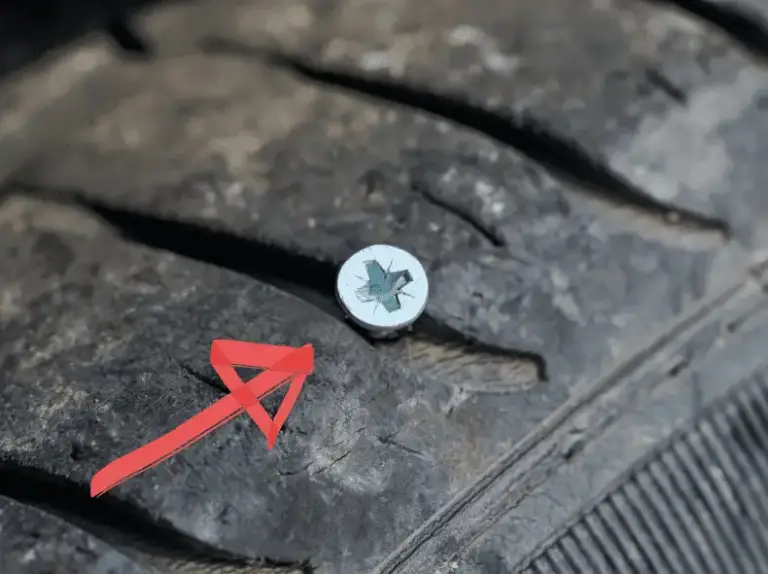Are you wondering if it’s possible to plug a tire with air in it? The answer is yes, but the process can be tricky, and you have to be very careful.
The main concern people have is that the tire might burst or pop during plughing or when removing the nail.
Fortunately, that won’t happen.
When you push the reaming tool or needle into the hole, the air will slowly leak out, so the tire won’t burst.
Not all the air will often leak out, and this is good news.
In fact, having air in the tire can actually help when plugging, as the tire remains more rigid and easier to plug. This is because the air pressure helps to keep the tire wall stable and more rigid.
However, it’s important to remember that the tire should not be over-inflated before plugging. Just ensure you know the recommended PSI of the tire and inflate it only to this.
Anything less than is fine.
Releasing The Air From A Tire Before Plugging.
If you’d like the piece of mind of a flat tire of air before plugging, there are two ways to get the air out.
Pressing Down On The Pin
Step One: Locate the Tire’s Valve.
The first step is to locate the tire’s valve. This is located on the edge of the wheel, near the rim.
Step Two: Remove the Valve Cap
Once you’ve located the valve, remove the valve cap. This will reveal a small metal pin inside the valve.
Step Three: Press the Metal Pin.
The next step is to press the metal pin inside the valve. This can be done with a stick, but better than that, a small screwdriver will suffice.
Once the pin is pressed, you will hear a “hissing” sound, indicating that the air has been released from the tire.
Tire Pressure Gauge
If you have a tire pressure gauge to hand, you can attach this to the valve, and rather than inflate, use it to deflate the tire instead.
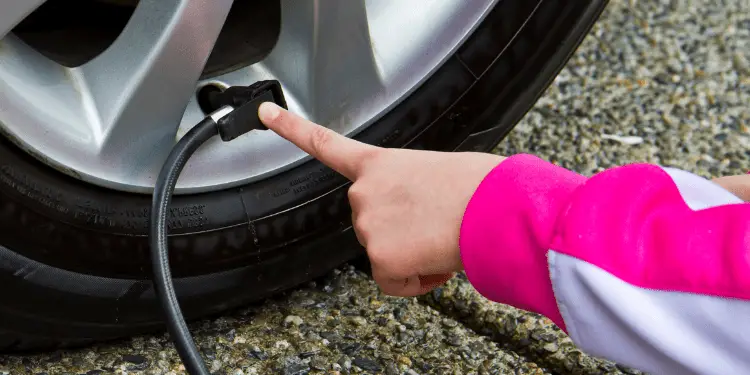
Attach the gauge as normal and then push down firmly on the gauge head.
This will push down the pin inside the valve, and as you’re not forcing air into the tire as you would be if you were adding air, the higher pressure in the tire will be allowed to escape past the pin and into the atmosphere.
Can You Plug A Tire When It Is Still On The Car?
This question gets asked an awful lot. Who would want to go through the extra steps of removing a wheel from a car to plug a tire?
It would be easier to do it in situ rather than remove it.
Nothing is stopping you from plugging a tire that is still on your car; however, it may not always be possible.
If the hole that needs plugging is on a rear wheel, you will find it extremely difficult to get enough space between the fender and the tire to plug it.
Even if you can access the hole, you may struggle to exert the force needed from this angle to push the reaming tool through the tire and steel belts.
You could try moving the tire to a position where it is at eight o clock on a clock face. This might just give you enough space to get the reaming tool and needle into the tire, but unlikely.
A front tire is much easier as you can turn the steering wheel to make the hole area face outwards, giving enough space to plug the tire.
Advantages
You’ll no doubt save time by not having to remove the wheel from the car.
If the puncture has occurred when driving on a busy road, you may feel safer spending less time outside of the car taking the wheel off.
Of course, if you can get the car parked where the flat tire is facing the sidewalk rather than the road would be better still.
Disadvantages.
You won’t have a chance to inspect the tire thoroughly when it is plugged on the car.
It is far better to inspect the tire before plugging. Often there will be other nicks and cuts that are not visible such as on the inner sidewall, that were caused at the same time as the puncture.
Any damage to the sidewall that isn’t superficial means you need a new tire.
Tire plugs are only a temporary fix regardless, and a proper professional tire patch should be done or a new tire fitted.
In Conclusion
A tire can be plugged with air in it. Once you remove the nail, air will likely leak away, but the tire will rarely pop.
If unsure, it is always best to release air through the valve, but this may make the tire less rigid and more difficult to plug.
Front tires can be plugged while the wheel is still on a car, but it will make the rest of the tire more difficult to inspect.
Often sidewall damage occurs at the same time as a puncture on the tread area and may be missed if the tire is replaced with the wheel still on the car.
To reiterate, a plug is deemed a temporary repair by all tire manufacturers.


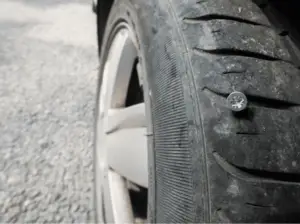
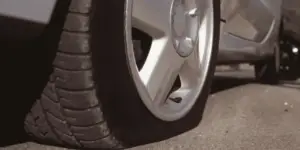
![Tire Plug Has A Slow Leak - What To Do? [ANSWERED] tire-being-plugged](https://carzaza.com/wp-content/uploads/2023/12/tire-being-plugged-300x224.png)
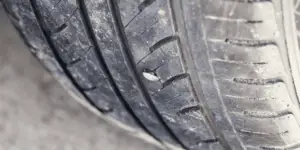
![How To Patch A Big Hole In A Tire [All The Stages] tire-patched](https://carzaza.com/wp-content/uploads/2023/12/tire-patched-300x224.png)
![How Long Does It Take To Plug A Tire?[Answered] tire-repair-kit](https://carzaza.com/wp-content/uploads/2023/12/tire-repair-kit-300x224.png)
